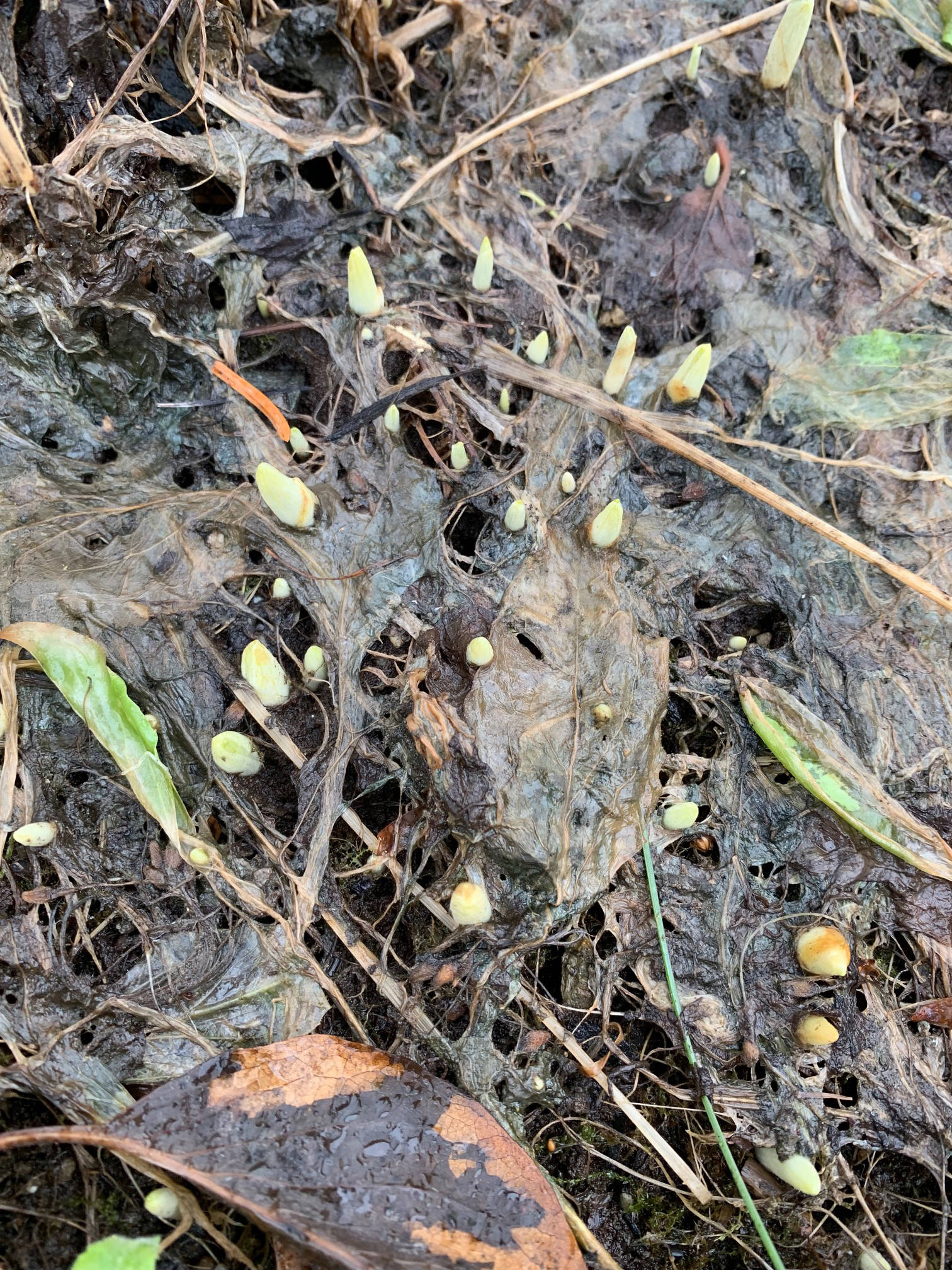There is no doubt in my mind that there is nothing trustworthy about March. But, instead of gritting my teeth, I get on with it. Which translates to pruning the deciduous trees.
We have four mountain ash, one Amur chokecherry, one flowering crabapple, two Siberian larch, one Shubert chokecherry. They are at this moment still dormant and this is when the pruning can be executed. If you wait until the leaves unfurl you will cause nothing but trouble for the tree and yourself.
Any broken branches will be the first you remove. Then think about shape. Look for the branches that are reaching up. This works in my situation because I have red twig dogwoods, honeysuckle, and lilacs underplanted and I don’t want any downward hanging branches interfering with them. The original intention was to have deciduous trees emerging from shrubs. That was supposed to be the entire East Garden. Now, this isn’t a complete fail but it isn’t the success I imagined. I have lost an Amur chokecherry and the one left is struggling, also gone is a mountain ash. The crowns of these trees floating over the shrubs is a vision I hold dear, the reality is livable.
There was a volunteer mountain ash in one of the perennial beds a few years ago. I left it alone because I noticed it had three trunks which I find particularly appealing. I gave it two years and then transplanted it to the West Garden where I had an flowering crab fail. It is performing perfectly. But, this year the Bohemain waxwings did not appear in November as they usually do, cleaning up every last berry. They, along with a handful of robins, made a very brief appearance this month. Hence, the trees are very heavy with berries. The transplanted tree, which is now about 20 feet tall, had branches that were interfering with the dwarf Korean lilacs planted beneath it. Now with the heavy berries, the branches were really compromising the situation. But it wasn’t the branches that needed to be removed, just the berries. If you have this same situation, just cut off the berry clusters, being careful not to cut the leaf bud at the end of the branch. These berry clusters are super saturated and very heavy. I tossed most of them into the compost; there is a chance they will seed and enough is enough. After their removal the branches snapped back up, thankful to be relieved of their burden.
I would wait to prune your shrubs. You will want to look for winter damage and that will not be apparent until they start to leaf. Every year I cut out what seems to be an enormous amount of branches from the red twig dogwoods. It doesn’t seem possible that there will be anything left but, sure enough, here comes new vigorous growth and the shrubs seem revitalized. This is necessary for these shrubs to retain their red color that is so very much appreciated all winter and even now, in the rain/snow/wind. The vivid red is not to be missed. If you don’t have any of these, correct that come planting time. Last year I purchased a dwarf variety that is now gracing the front perennial bed. Better to look at red twigs all the long winter than not much of anything.
Don’t touch your lilacs. They set buds in the fall, these will be your blooms come spring. If you have a specimen that has grown so tall and only has blooms at the very top and you can’t reach them to give them a good deep smell and pick an armload to take inside, well, cut it down. It will grow back. Jim Rowe cuts a third out of his lilacs immediately after blooming. His reward are massive blooms all over the shrubs. I have yet to get either brave or desperate enough to follow suit.
Our son, Darren, and his family have a puppy, therefore, we have a puppy coming and going in our lives. Boris, the chocolate lab, loves to pull the Christmas tree branches off the perennial beds. I went through this with our own Jade the Dog when she was a puppy and here we go again. It makes me want to swear off mulch, certainly not puppies. But, really, what am I mulching? Foxgloves. I love them, but they are fickle. I plant Foxy because it will bloom the first year and the second year is spectacular. I want that second year and without mulch I won’t get it. I need to think about this.
Note: My next column won’t appear until April 11. I will be in my daughter’s garden (south of Bellingham) among the hellebore, crocus, cyclamen, and who knows what else, and there I will kiss March goodbye.
Rosemary Fitzpatrick is a longtime Homer gardener and has been writing Kachemak Gardener since 1990.


